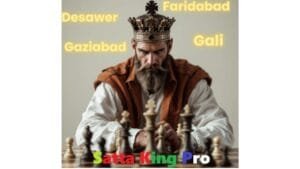The Rise and Fall of Satya Kalinga Darbar: A Historical Account
In the annals of Odia history, Satya Kalinga Darbar, also known as Karkotakeswar, was a fabled capital city of the Eastern Ganga dynasty during the 12th century. Founded by Emperor Rayaraja I (1100-1120 CE), it was a bustling metropolis, a center of art, architecture, and learning, and a symbol of power and prosperity. This article aims to explore the rise and fall of Satya Kalinga Darbar, uncovering the fascinating story of its rise, peak, and eventual decline.
Rise: The Golden Age (1100-1200 CE)
Founded in 1100 CE by Emperor Rayaraja I, Satya Kalinga Darbar was strategically located in the fertile Debidwar region, near modern-day Jajpur, Odisha. During its early years, the city flourished under the visionary leadership of Rayaraja I, who encouraged economic growth, trade, and cultural development. The city became a major hub of textile production, with artisans and merchants arriving from all parts of India to trade in silk, cotton, and other luxury goods.
The city also attracted scholars and artists from across the continent, drawn to its renowned centers of learning, such as the famous Bhubaneswar University. The city’s patronage of the arts led to the creation of magnificent temples, sculptures, and architectural marvels, showcasing the city’s artistic and cultural prowess.
Peak: The Height of Prosperity (1200-1250 CE)
By the late 12th century, Satya Kalinga Darbar had reached the peak of its prosperity, attracting visitors and admirers from as far as China, Southeast Asia, and the Middle East. The city’s wealth and grandeur were reflected in its impressive architecture, with the construction of magnificent temples, monasteries, and administrative buildings. The city’s royal court was a center of power, with Emperor Rajendra I (1170-1178 CE) and Vira Ballala III (1250-1264 CE) presiding over a vast empire that stretched from the Ganges to the Eastern Ghats.
The city’s cultural achievements during this period were also unparalleled, with the development of a distinct Odia language, literature, music, and dance. The city was also a center of music, with the creation of the famous ‘Chhappan Bhairava Nataka,’ a 14th-century Odia musical instrument.
Fall: Decline and Abandonment (1250-1400 CE)
The rapid decline of Satya Kalinga Darbar began with the fall of the Eastern Ganga dynasty in the 13th century. The empire was beset by internal conflicts, external threats from neighboring kingdoms, and the devastating effects of a prolonged drought. The city’s once-thriving economy began to stagnate, and the once-proud royal court was weakened by infighting and external pressures.
As the 14th century progressed, the city was repeatedly attacked and pillaged by rival kingdoms, including the Kakatiya dynasty of Warangal and the Orissa Chalukya dynasty of Cuttack. The once-magnificent city was left in ruins, and its people were forced to flee or scatter. By the end of the 14th century, Satya Kalinga Darbar was all but abandoned, leaving behind only ruins and memories of its former glory.
Legacy: Legacy of a Lost City
Today, the ruins of Satya Kalinga Darbar lie scattered across Jajpur and surrounding areas, a testament to the city’s once-magnificent past. While the city is no more, its legacy lives on in the rich cultural heritage of Odisha, inspiring generations of scholars, artists, and historians. The city’s story serves as a reminder of the impermanence of human achievement and the transience of power.
In conclusion, the rise and fall of Satya Kalinga Darbar is a poignant reminder of the complexities and vicissitudes of history. From its golden age to its decline and abandonment, the city’s story is a testament to the enduring power of human creativity, perseverance, and adaptability in the face of adversity. As archaeologists and historians continue to uncover the secrets of this enigmatic city, the lessons of Satya Kalinga Darbar remain relevant, reminding us of the importance of preserving our cultural heritage and the significance of understanding our shared human past.





